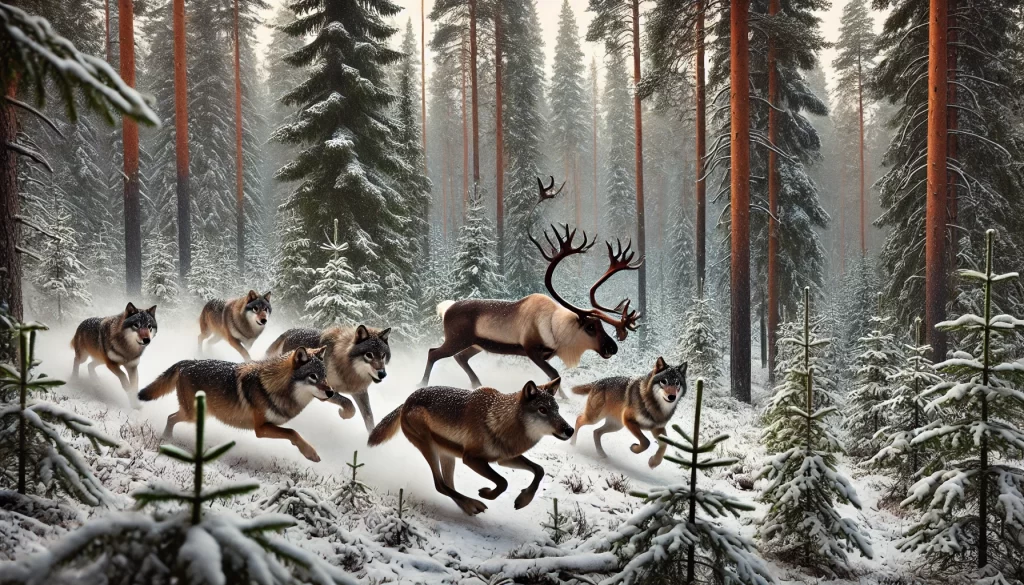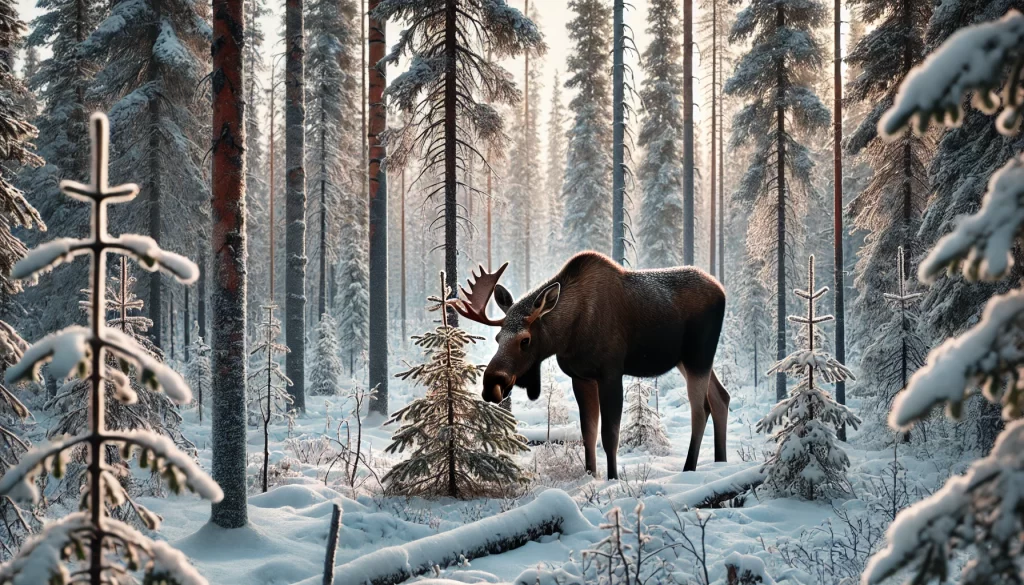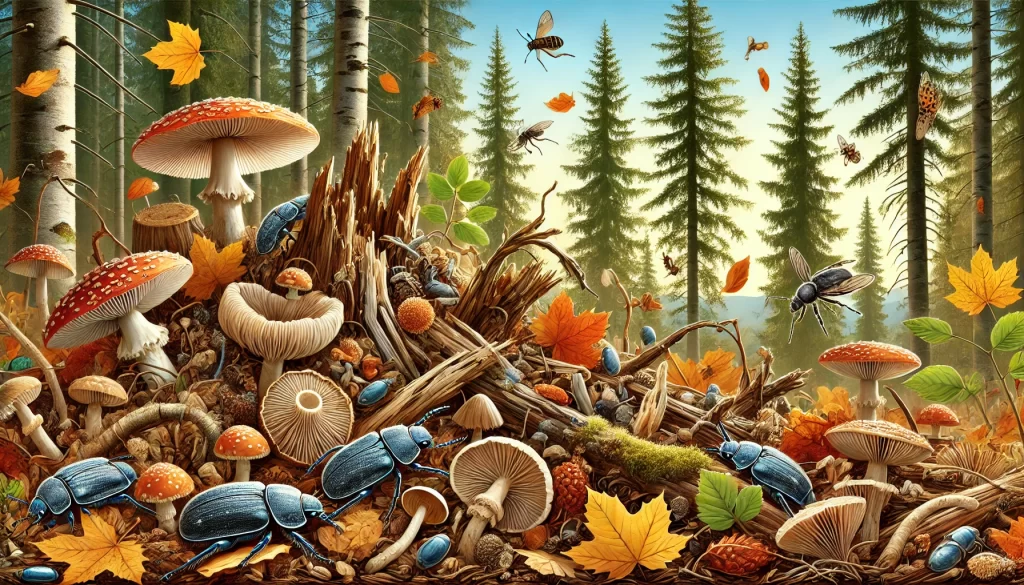Table of Contents
The food chain of the taiga is a fascinating web of life that plays a crucial role in maintaining the balance of this unique ecosystem. In the cold and snowy regions of the taiga, each organism relies on others to survive, creating a complex network of energy flow and nutrient cycling. In this article, we will explore the intricate details of the food chain in the taiga, uncovering how each link contributes to the survival of this vital ecosystem.
Understanding the Taiga Ecosystem

What is the Taiga?
The taiga, also known as the boreal forest, is a biome characterized by its cold climate, coniferous trees, and long winters. It stretches across North America, Europe, and Asia, and is home to a variety of plant and animal species adapted to its harsh conditions. The food chain of the taiga is shaped by these environmental factors, influencing how energy and nutrients flow through the ecosystem.
Key Features of the Taiga
The taiga’s defining features include its dense forests of pine, spruce, and fir trees, as well as its cold, snowy winters and short, warm summers. These conditions create a unique habitat where only certain species can thrive, leading to a specialized food chain of the taiga.
The Primary Producers
Coniferous Trees
At the base of the food chain of the taiga are the primary producers: coniferous trees such as pine, spruce, and fir. These trees are well adapted to the cold climate and short growing seasons of the taiga. They play a crucial role in capturing sunlight and converting it into energy through photosynthesis, providing the foundation for the entire food chain.
Mosses and Lichens
In addition to trees, mosses and lichens are important primary producers in the taiga. They thrive in the moist, shaded environment created by the dense forest canopy and contribute to the food chain of the taiga by providing a source of food for herbivores and aiding in the decomposition of organic matter.
Herbivores of the Taiga

Small Mammals
The next link in the food chain of the taiga consists of herbivores such as small mammals. These include animals like voles, lemmings, and snowshoe hares. Small mammals feed on the vegetation available in the taiga, such as leaves, twigs, and mosses. Their presence is vital for transferring energy from plants to higher trophic levels.
Larger Herbivores
In addition to small mammals, larger herbivores such as moose and caribou also play a role in the food chain of the taiga. These animals graze on shrubs, grasses, and tree bark, influencing the structure and composition of the plant community. Their feeding habits can impact the distribution of plant species and affect the overall health of the ecosystem.
Carnivores and Predators
Birds of Prey
Birds of prey, such as the northern goshawk and the snowy owl, are important predators in the food chain of the taiga. They hunt small mammals, insects, and other birds, helping to regulate populations of these animals. Their presence ensures that herbivore populations do not become too large, which helps maintain balance within the ecosystem.
Mammalian Predators
Larger predators, including the lynx and the gray wolf, are key components of the food chain of the taiga. These carnivores hunt larger herbivores like moose and caribou, exerting top-down control on the herbivore populations. By controlling herbivore numbers, they help to prevent overgrazing and maintain the health of the plant community.
Decomposers and Nutrient Cycling
Fungi and Bacteria
Decomposers such as fungi and bacteria play a crucial role in the food chain of the taiga by breaking down dead plant and animal material. This process releases nutrients back into the soil, where they can be taken up by primary producers. Decomposers help to recycle nutrients and ensure the continuation of the food chain of the taiga.
Insects
Insects, such as beetles and ants, are also important decomposers in the taiga. They feed on decaying organic matter and contribute to the breakdown of plant and animal material. Their activities help to speed up the decomposition process and facilitate nutrient cycling in the ecosystem.
The Impact of Climate Change
Effects on the Food Chain
Climate change is having a significant impact on the food chain of the taiga. Rising temperatures and shifting precipitation patterns are affecting the distribution and abundance of plant and animal species. Changes in the timing of seasonal events, such as snowmelt and plant growth, can disrupt the delicate balance of the food chain.
Adaptation and Resilience
Despite these challenges, the taiga ecosystem is resilient and has the ability to adapt to changing conditions. Many species are capable of shifting their ranges or altering their behaviors in response to environmental changes. However, the speed and magnitude of climate change pose significant risks to the stability of the food chain of the taiga.
Also Read: Spicyrranny: Uncover the Secret to Irresistible Flavors
Human Influence on the Taiga Food Chain
Human activities have increasingly impacted the delicate balance of the food chain in the taiga. One of the most significant threats is deforestation, driven by logging, mining, and oil extraction. The removal of large areas of forest not only reduces the habitat for species such as moose, wolves, and lynx, but it also disrupts the primary producers, such as coniferous trees, that form the base of the taiga food chain. This loss of habitat affects herbivores that rely on these plants for food, which in turn impacts the predators that hunt them, causing a cascading effect throughout the ecosystem.
Additionally, industrialization and the construction of roads and infrastructure fragment the taiga habitat, making it more difficult for species to migrate and find food, particularly during harsh winters. For example, caribou and other herbivores may struggle to move between feeding grounds, leading to declines in their populations and affecting the carnivores that rely on them for sustenance.
The food chain of the taiga is a complex and interconnected system that supports a diverse array of plant and animal species. From the primary producers at the base to the top predators that regulate populations, each link in the chain plays a vital role in maintaining the balance of this unique ecosystem. Understanding the intricacies of the taiga food chain helps us appreciate the delicate balance of nature and the importance of preserving these critical habitats in the face of environmental change.



